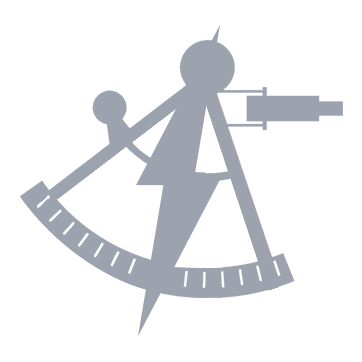“Captain’s log, stardate seven-eight-seven-seven-four point six. Since our arrival in The Veil, the mysteries of this area continue to allude to us. T’Liana has launched a series of modified probes to determine if we can get a better understanding. This area is a goldmine for exploration and discovery. I don’t think we can do it justice while trying to find a way out. Our away team to the Romart successfully retrieved their computer logs and the personal items belonging to our newest crewmembers. I hope Lieutenant Dreth and his comrades integrate well into the crew while we are here. I am leaving that in the capable hands of Counsellor Solis. In the meantime, while we try to find a way out, we are now orbiting the asteroid we detected shortly after our arrival.”
“Fascinating,” T’Liana’s soft voice murmured as she dedicatedly analysed the data transmitted by the probes she had launched earlier. Lost in her work, T’Liana couldn’t help but wonder if the ongoing exploration of this uncharted area would keep surprising her. It was a puzzle that intrigued her on so many levels. A steady stream of data flooded into the astrometrics lab when the sliding doors swished open, revealing the arrival presence of Captain Banfield, with Commander Jen following closely behind. Both seem eager to learn about what she had discovered so far.
“What do you have so far, lieutenant?” Banfield asked, the urgency of wanting to know something was at the tip of her tongue. T’Liana could hear that. Though they shared a passion for the sciences, T’Liana knew Captain Banfield wanted to find a way out before The Veil became their permanent home, and the ship was forever lost.
“I have several matters to report,” T’Liana answered confidently. “How would you like to proceed?”
Banfield grinned at that news as she gave a side look towards Jen. He, too, was pleased to hear it. T’Liana hoped that neither of them would be disappointed with her answers.
“However you want to,” Banfield told T’Lianna with a wave of her hand to proceed in her own manner.
Appreciating the vote of confidence in her decision-making, T’Liana bowed her head. “Very well,” T’Liana said as she moved from the side station to the primary controls and activated the vast screen and the holographic projectors. “As I said earlier, this area is almost like a nebula; however, I am convinced by the readings we have taken from the Romart and compared them to ours and the probes we have now launched that it is more than that. It is a thriving spatial eco-system.”
“How can you be sure?” Jen questioned as he stepped forward to look at what T’Liana was presenting to them.
Pressing a few more buttons, T’Liana highlighted a few scans in the holographic projection. “The interstellar matter appears to be what some of the cosmozoans digest.”
“You’ve found more family members of Nibbler’s?” Jen asked, referring to the cosmozoan they encountered eating the Romart. Nibbler was the nickname that Jisaraa, CJ and Thamars named it. It had become a bit tiresome for them to keep calling it a ‘cosmozoan’ every time it shifted from one part of the Romart’s wing that it was enjoying to another.
She nodded as she displayed what appeared to be a herd of Nibbler’s fellow creatures. “Indeed, these…what was it Commander Westerham called them?” She had forgotten the other phrase coined by the senior staff about the creature.
“Space-rays,” Banfield answered. As a fellow scientist, Banfield displayed that she wasn’t impressed by the lack of scientific language when her husband had named Nibbler’s species, but there wasn’t much else they could call them for now without further study.
“These space-rays appear to come in different dimensions and I would theorise, based on the behavioural patterns we’ve observed so far, that they travel together in large groups,” T’Liana shared. “Nibbler would appear to be a stray from the pack.”
“The Romart must be tasty enough to stray from the herd,” Jen remarked with a slight chuckle. “I don’t think we should tell Dreth that.”
“I believe it was the Romart’s use of full impulse that overloaded their engines that attracted Nibbler’s attention. Since we have been in close proximity to Nibbler, we have not appeared appetising, ” T’Liana stated, choosing her words carefully. “However, Nibbler’s kind are not the only space-dwelling creatures I have found.”
Pressing several more buttons, the Vulcan woman indicated to other groups of creatures all living in and around The Veil.
“I believe this is Starfleet’s first time detecting a high concentration of space-dwelling lifeforms in such a confined area of space,” T’Liana said. “Some cooperate, some ignore, while some are predator and prey. We have probes observing them, and I’ve got a science team already monitoring the results to gain more insight.”
“Excellent,” Banfield said. She was highly impressed with this find. “What else do you have?”
Pressing another button, T’Liana moved to show her superiors the next matter that intrigued her. “This asteroid we detected earlier is no ordinary asteroid.”
“Would it surprise you if I said I expected you to say something like that?” Jen quizzed; his sarcasm was laced in every word.
T’Liana only raised her eyebrow at the first officer and restrained herself from answering him. Instead, she remained professional and composed as she continued her presentation. “A closer investigation has shown that the asteroid is also teeming with life.”
“Really?” Banfield asked her inner scientist was bursting to know more. “Sentient life?”
“We have not confirmed what they are yet, but they appear to be flora.” T’Liana adjusted the screen to show the asteroid lit up with sparkling pockets of growth over it. They all appeared to be shimmering as they pulsated different shades of blues, purples and pinks. “We have detected strange energy patterns in the flora on the asteroid. In fact, the flora has reacted to the ship’s presence.” T’Liana shared.
“How?” Banfield questioned. That was certainly unusual and was something that T’Liana had been studying before the captain and commander had entered astrometrics.
Crossing her arms, T’Liana conveyed what she knew. “I believe it could be due to our slight disturbance in the surrounding interstellar matter. The flora appears to thrive on it. Similar to how some plants need sunlight to grow, these flora depend on the interstellar matter just like the cosmozoans do.” She pressed a few more buttons to alter the display and showed them what else she and her team had found. “There appears to be a chain of asteroids that are close to one another. Each with the same properties.”
“They look like a chain of islands,” Banfield remarked as she studied the sensor readings closely. “All sat within the confines of a great sea. How come our sensors only registered the asteroid we’re orbiting?”
“Its mass and size are one factor; however, interstellar matter can hide some of what we are now finding. Our probes appear to be the only instruments that can find them, though that is only because they get close enough to detect them,” T’Liana explained.
“Is there anything else to help us find a way out?” Jen asked.
T’Liana sighed for the first time since they arrived. “I am afraid not,” she answered, sounding deflated. “There are few indicators of what caused the gravitational shift that overwhelmed and pulled us. However, this area has so much interstellar material that it is hard to track such movement precisely. Four probes have already been sent to the barrier we passed through to scan it further. I hope to find a way to replicate the subspace shockwave we encountered that allowed us to travel through the barrier.”
It was clear from T’Liana’s observation of Captain Banfield’s reaction that she wasn’t about to be beaten by a scientific mystery. “It sounds like you’ve covered all the areas, lieutenant.” Banfield gave T’Liana a supportive smile before focusing back on the readings before them.
“At least we can use the time while we’re here to make some interesting discoveries,” Jen said, trying to sound optimistic.
“Indeed,” T’Liana agreed with Jen and appreciated his sentiment. “However, commander, I am not confident that the crew will like to spend a lifetime undertaking such research.”
Ignoring their conversation momentarily, Banfield focused on what one of the probes reported. Noticing her captain’s distraction, T’Liana looked over to what Banfield was concentrating on. “Have you found something of further interest, captain?”
Banfield nodded as she pointed at the holographic display of the asteroids they were near. “I could be wrong, but those sensors show a neurogenic field.”
“There are more lifeforms living in the asteroids, ones that could be intelligent,” Banfield remarked, her tone indicating the potential significance of this discovery. “The presence of a neurogenic field suggests a level of intelligence and organisation among these lifeforms, which could have profound implications for our understanding of this region of space.”
“Or that it could be dangerous and cause telepathic illusions in the crew,” T’Liana warned. Commodore McCallister had briefed them recently about some of Voyager’s discoveries in this part of the Swallow Nebula region, including meeting a species that used a neurogenic field to create collective unconsciousness. He had told everyone in the Odyssey Squadron to avoid their space as he was not keen on knowing what was in everyone’s dreams or nightmares. T’Liana was not keen on dealing with them or others like them.
“Not if we wore cortical inhibitors that were tuned to block out the neurogenic field,” Banfield said. It was more apparent she was getting excited about this prospect. “There’s no way the Triton could enter one of these asteroids. None of the entrances are wide or long enough for the ship to move in safely. We’d need to take a runabout or shuttle in.”
“Shouldn’t we send a probe in first, ma’am?” Jen suggested. His tone showed that he was worried about what the captain was planning. T’Liana agreed with his assessment, and launching a probe to make the discovery on their behalf seemed like the most logical choice to make here. However, she had recently noticed that Captain Banfield was not always logical in her choices.
“And sit on our hands and read the data?” Banfield asked, sounding slightly jovial but annoyed at Jen’s idea. She shook her head and tutted. “No, no, no. I want to see this up close.”
“Let me guess, you’re going to lead the away mission?” Jen said, crossing his arms against his chest. It was now apparent he had almost given up trying to convince the captain to follow a different course of action first.
“Captain’s prerogative,” Banfield smirked, looking back at her first officer. “I’ll take the Calliste out to get a better look.”
“Who will you take?” Jen asked.
T’Liana felt the captain’s eyes on her before she had even looked at her.
“My trusty chief science officer,” Banfield replied with a huge grin. “Along with CJ and Doctor Nicus.”
“Take Tharmas with you in case the Calliste encounters a technical issue,” Jen advised.
“She’s a brand new Delta-class; what can go wrong?” Banfield asked.
“Please, ma’am,” Jen emphasised on his pleading.
Relenting, Banfield agreed to have the operations officer join them. “Very well,” she said and looked at T’Liana. “Lieutenant, use the probes and sensors to determine which asteroid has the lowest neurogenic field. That one will be the first one we explore.”
Intrigued by the captain’s decision to find the lowest neurogenic field, T’Lianna asked her why she wanted to start there. “If we wish to meet possible new life, surely the one of the highest would be the most useful to us?”
“Yes, but if they’re not friendly, I don’t want them to use too much of their telepathic illusions to overwhelm us,” Banfield replied before she started to call those she would be taking with her on her away mission.
“This should be fun!” She said as she left astrometrics with Jen in tow.
T’Liana only raised her eyebrow and questioned whether or not the adjective ‘fun’ would be correct.

 Bravo Fleet
Bravo Fleet








